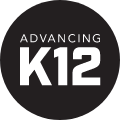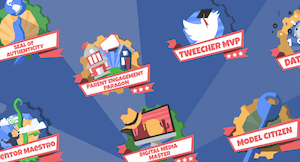
School district purchasing departments aren't the most visible contributors to the educational experience. Even so, it's hard to miss the evolution that's been underway for the last few years.
In the relatively short time I've spent immersed in the edtech market, I've been fascinated by how different purchasing is from district to district. While much of the variation can be attributed to hard-to-break traditions, leadership, and culture, some factors have a relatively consistent impact on the experience, including:
- Size – If there’s one thing you can count on, it’s that the tiniest schools will conduct the most rigorous evaluations. Edtech sales teams often must put more hours into closing a 100-student charter school deal than one for a 30,000-student district.
- Locale - There are entire states in which districts prefer to eschew the RFP process, while others are forced into it for every medium-large purchase.
- Committee – Some districts purchase based on the sole input of their superintendent, while others look to a consensus of administrators, teachers, support staff, community members, and the elder councils of neighboring villages.
The fact that these stark differences exist makes it easier to pick out the universal paradigm shifts that come along with new technological breakthroughs.
In the past three years, as the digital citizenry (read: everyone) has become accustomed to late-stage Web 2.0 / early-stage Web 3.0 technology, edtech purchasers have largely come around on the idea that user experience, not features and functionality, stands alone as the most important factor in determining the success or failure of a technology investment.
Chasing Checkboxes
Software must meet some basic thresholds of functionality before it can be considered viable. Teachers need the ability to enter grades, post assignments, and measure student progress through their gradebook. Students should expect to see improvements in their understanding after using an app built for a given subject. Data managers must be able to find and extract information from specific fields in a format that is compliant with state and federal requirements. These functions are non-negotiable.It’s when you start drilling down into layer upon layer of granularity that you must consider diminishing returns. For years, hundreds of development hours were devoted to chasing specification checkboxes, because that’s how deals were won. Vendors adopted a tunnel vision approach to software enhancement, slapping one Band-Aid® on top of another with no time set aside for an ongoing review of the big picture.
Most of the established products on the market are within tiny fractions of percentage points of each other from a functional standpoint. If there’s one unique thing a certain vendor can do at this moment in time, you can bet everyone else will be able to do it six months from now, before the ink has dried on your contract.
Spec-based purchasing is a lot like price-based purchasing – nobody wins. Established vendors fall behind the technology curve trying to keep up with small-scale additions and alterations, while flash-in-the-pan new arrivals fail to provide the stability districts need. The result is a complex product that can “do everything” but that nobody enjoys using.
The UX Revolution
Nothing good can come from a purchase of new technology without the buy-in of the people tasked with using it. Leaders that have the most success with major purchases rely on their internal community to play an active role in the buying process, with representatives from various groups sitting in on demonstrations and providing feedback.For many vendors, however, the shock of the UX takeover as a primary evaluation factor has forced some uncomfortable reflection. You can only hear the words “we decided to go in a different direction because [insert stakeholder group] thought the other system looked easier” so many times before you realize you have a problem.
Those flashy demonstrations are indicative of a strong UI (user interface) – an important component of UX, to be sure, but not the only one. UX is a systems-thinking endeavor. Aside from look and feel, other factors that affect our experience might include onboarding, training, and support. These non-programmatic elements often require a significant internal commitment of time and resources.
This is another area in which the market has had to adapt in recent years. As UI expectations have begun to encompass both form and function, so too has the responsibility for training and professional development shifted away from district technology departments and into the hands of edtech companies. Even the most established providers are at risk of losing business to competitors who have pivoted to a UX-focused model.
Think about the systems you use every day. How many of them do you love talking about with your peers? How confident are you that you know what each of them can do to make your life easier? On the flip side, how many cause you more headaches than relief? That’s the difference between an outstanding experience and a product built for the “chasing checkboxes” era. One is fast becoming a baseline expectation, while the other is already obsolete.
Purchasing authority may vary from district to district, but one thing is certain – decision makers who err on the side of user experience stand a much better chance of finding a long-term answer for their community to rally around than those who rely on a black and white comparison of outdated specifications. Viva UX.
Want to make a case for spec sheets? Have a UX success story to share? Let us know in the comments below.
WHAT'S NEXT FOR YOUR EDTECH? The right combo of tools & support retains staff and serves students better. We'd love to help. Visit skyward.com/get-started to learn more.

|
Advancing K12 Staff Edtech Thought Leaders |




